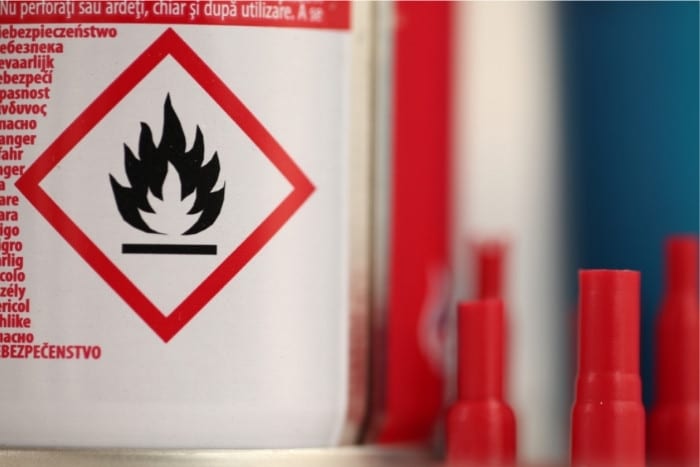Butane stoves are renowned for their easy set-up and adjustable flame, allowing you to choose how hot the stove is. They are lightweight and work efficiently in almost any condition. However, it is highly debated how well butane stoves work in cold weather.
Butane stoves can struggle to work in cold conditions because of the temperature the butane gas vaporizes at. Vaporizing at 31F, a butane stove can only just work below freezing. However, there are ways you can improve the butane’s capabilities, such as heating the canister or inverting it.
In this article, we start with the science and examine why butane gas struggles to work in cold conditions. We then give you 10 tips on how to improve butane stoves’ performance. We hope this gives you all the information you need to enjoy your butane stove in the winter.
Why Do Butane Stoves Struggle to Work in Cold Conditions?
Butane stoves can be used in cold conditions, but they are not always working at their most efficient.
Butane canisters can struggle to work in cold conditions because the temperature of the liquid in the canister vaporizes into a gas.
Butane is somewhat useless below freezing because it vaporizes at 31F (or -0.56 C).
This means that the butane canister may find it difficult to create a flame or that the stove will not last long because it uses more fuel to stay alight.
Before you conclude that your butane stove is useless for your winter camping expedition, a butane stove can be adapted to deal with cold conditions better.

How to Improve Butane Stoves in Cold Weather?
We’ve got 10 ways to improve your butane stove in cold weather.
Some of these methods might be more accessible, such as using a candle to heat the gas, or perhaps you have a remote canister system that allows you to invert the canister.
Please exercise caution when trying any method that involves heating the canister. You don’t want a butane explosion.
1. Place it Near the Fire
Placing your canister near a fire is a good and quick way to get your butane canister working in the cold. However, it is also the most hazardous.
You need to make sure that the canister is not too close to the fire, as an overheated canister could cause the gas to explode.
Keep an eye on it, and it’s a great way to get your butane stove working in the cold.
2. Store in the Middle of Your Pack or in Your Sleeping Bag
If a fire is unavailable, you can always pop your butane canister into your pack or roll it in your sleeping bag. This means it is already pre-warming before you even need it.
If hiking during the day, put the canister in the middle of your pack. If you know you’ll want a cup of tea in the morning, then put your canister into your sleeping bag when you go to sleep.
3. Use a Water Bath
If you can partially warm some water, you can improve how long your stove works. Placing the butane canister in a water bath will warm the liquid into a gas and reduce the vaporization rate.
If you are using the stove in snow, then melting a small amount of snow should allow you to create a water bath and raise the temperature of the butane canister.
4. A Candle
Using a candle to heat a butane canister is a quick and efficient way to improve your stove in the cold. Place the candle underneath the canister until it is slightly warm.
You must be careful of the canister getting too hot, so ensure you only use it for a short period. Candles can be lightweight and small while always giving out the same amount of heat.
5. Isobutane and Propane Blends
Isobutane is a variation of butane. Its chemical components allow it to vaporize down to 11F. It can work at lower temperatures and won’t struggle as much as a pure butane canister.
Propane and butane mix canisters can deal with even lower temperatures. The only drawback is that your canister may be heavy.
You can always ask your local camping store if you have questions about the gas mixes.
6. Windshield
You can purchase a windshield for your stove, which will, in turn, help the stove flame stay lit. The windshield protects your stove from the cold and thus creates some insulation for your butane canister.
You just need to ensure you have some ventilation for the windshield because trapping too much heat could cause the butane canister to blow.
7. Remote Canister System
A remote canister system only works if you have an isobutane mix. The system allows the canister to be inverted, which burns gas at lower temperatures.
This is because it burns gas as a liquid instead of as a gas. A remote system is more efficient than just inverting a canister because it is much safer and more stable than leaning the canister.
It also allows you to safely build a windshield around the stove.
8. Use a Sleeve Warmer
A sleeve warmer is a great insulator for your butane canister. You can purchase canister sleeves or make your own out of a merino sock or part of an old wetsuit.
The layer of air between the butane canister and the sleeve helps to keep the canister warm and reduces the chance that it will go out. For your safety, make sure the sleeve is not too tall.
You don’t want your stove setting your sleeve on fire.
9. Hand Warmers
Using hand warmers to warm your butane canister is another great way to get your stove working in cold conditions. These super lightweight aids can be popped and pressed next to the canister.
It’s a quick option if you need to get your stove working quickly, and they will do a great job making you feel warmer too.
They are normally fairly cheap to purchase, which makes them a helpful addition to your backpack.
10. Copper Strip
A copper strip can be used to improve a butane canister’s capabilities in the cold.
There are several ways to attach a copper strip; you can twist a thin piece around the canister or attach a strip of copper to the side of a canister with a band.
The end of the copper strip should be above the canister flame. The flame then heats the strip and keeps the canister warm.
You need to be careful if you try this method because the strip will be hot after use, and you want to avoid the canister getting too hot, as this may cause an explosion.

Final Thoughts
Butane stoves are clean and efficient for camping, but many wonder how they handle cold weather. We hope this article gave you an in-depth look at why butane stoves struggle in cold weather.
It’s all down to the butane gas. However, we’ve given you 10 easy ways to improve a butane’s efficiency in cold weather. These tips will get you camping no matter the weather.
Always be aware of the dangers of heating a gas canister.
